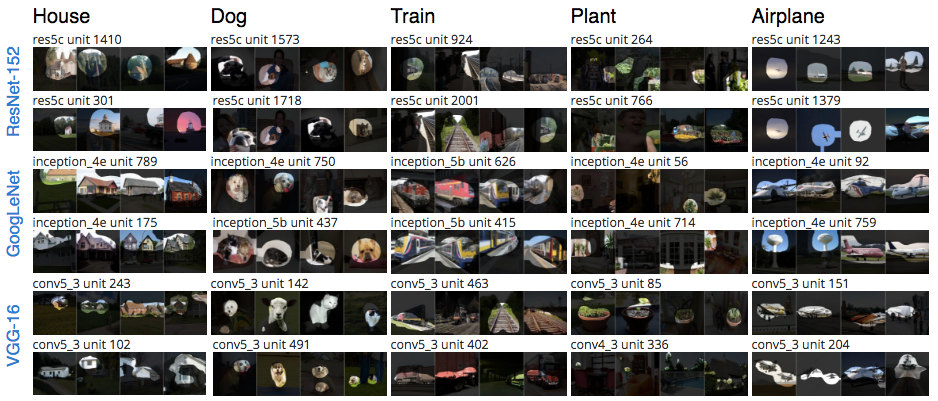Beware the Chimera
In Greek mythology, the Chimera was a monster with the body of a lion, the head of a goat, and the snake of a tail: an beast made of the parts of many other animals. Today the term is still used to represent a crazy cross, but it is also used to describe a highly desired fantasy that is a figment of your imagination.
As we scrutinize internals of deep neural networks hunting for meaning, we must beware the Chimera. In other words, we need to make sure that the interpretable phenomena we see are faithful reflections of the operation of the network, and not illusiory combinations created by our limited imagination.
Network Dissection
Discerning chimeras has been one of my concerns as I have worked in Antonio Torralba's lab, together with Bolei Zhou and Aditya Khosla, on understanding internal neuron interpretaitons. My work is motivated by the amazing emergent structure discovered by Bolei and Aditya in 2014. They found that when you train a deep network to solve a whole-image scene classifcation problem (deciding whether an image is in one of 205 place categories), hidden internal units emerge that that identify and localize the presence of specific types of objects such as dogs, cars, houses, and boats, that were not labeled in the training set. Since object segmentation is a difficult problem, it is amazing to see the problem being solved without any specific training for that problem.
Examples of emergent detectors can be seen below. Each block of images represents the areas of highest activation of single convolutional units inside a deep network.
The emergence of these common-sense concepts is striking. When you look inside smaller networks (such as the MNIST networks I examined last summer) you do not find this effect.
Nevertheless, I am still left with the questions, "are our interpretations of these units a chimera"? Is the network truly discovering the visual concept of a "dog" or an "airplane", or is the network discovering a more general way of organizing the images, and when we peer into an aspect of that organization, we impose our own concept of object classes on it.
Isotropic Phenomena
How can we tell the difference between a chimera and a true interpretatation? One way was proposed by Szegedy in 2013: if random combinations of units are just as interpretable as individual units, then
